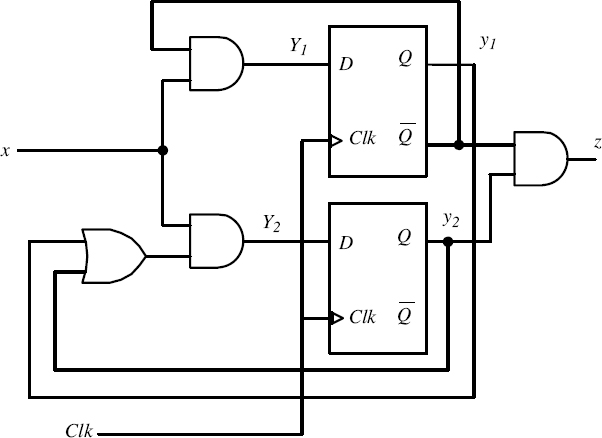9.6 ONE-HOT ENCODING METHOD
One-hot encoding is an alternative state assignment method which attempts to minimize the combinational logic by increasing the number of flip-flops. The goal of the method is to try to reduce the number of connections between the logic gates in the combinational circuit of the FSM. The presence of more gate interconnections results into longer propagation delays and a slower FSM. Since the propagation delay through the flip-flops is faster, FSMs require fewer logic gates but not necessarily fewer flip-flops.

Figure 9.26 Logic Implementation of the FSM in Figure 9.24
One-hot encoding assigns one flip-flop for each state. For example, a finite-state machine with N states requires N flip-flops. The states are assigned N-bit binary numbers; where only the corresponding bit position is equal to 1, the remaining bits are equal to0. For example, in a finite-state machine with four states S0, S1, S2, and S3, the states are assigned the binary values 0001, 0010, 0100, and 1000, respectively. Notice that only one bit position is equal to 1; the other bits are all equal to 0. The reamaining 12 binary combinations are assigned to don't-care states. Consider the Mealy-type finite-state machine described by the state diagram shown in Figure 9.19. The state diagram has three states: S0, S1, and S2. One-hot encoding assigns the binary number values 001, 010, and 100 ...
Get Introduction to Digital Systems: Modeling, Synthesis, and Simulation Using VHDL now with the O’Reilly learning platform.
O’Reilly members experience books, live events, courses curated by job role, and more from O’Reilly and nearly 200 top publishers.

